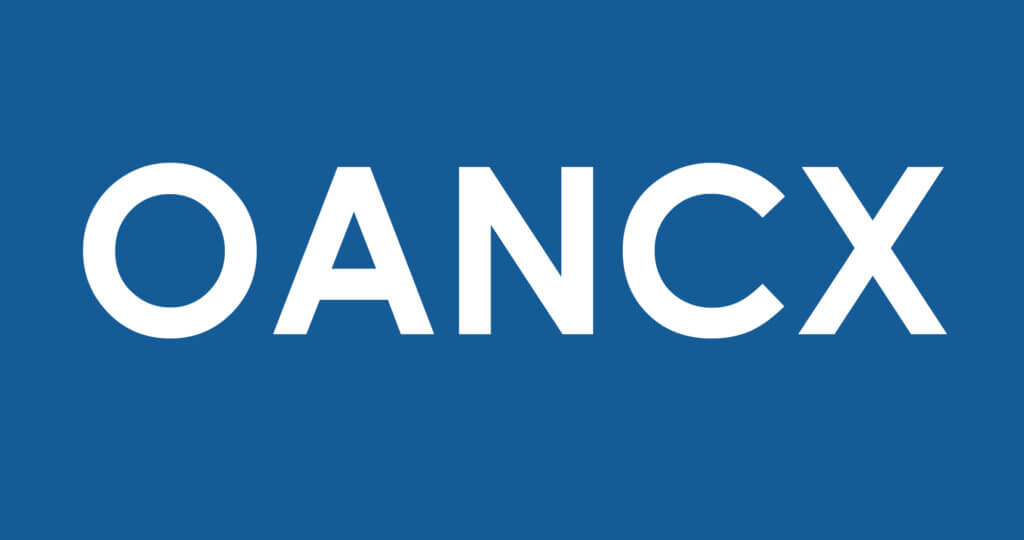Oakmark Bond Fund – Institutional Class
Average Annual Total Returns 09/30/21
Since Inception 06/10/20 4.58%
1-year 3.88%
3-month 0.38%
Gross Expense Ratio: 2.82%
Net Expense Ratio: 0.59%
Expense ratios are based on estimated amounts for the current fiscal year; actual expenses may vary.
The Fund’s Adviser has contractually undertaken to waive and/or reimburse certain fees and expenses so that the total annual operating expenses of each class are limited to 0.64%, 0.59%, and 0.44% of average net assets, respectively. The contractual advisory fee waiver agreement is effective through January 27, 2022.
Past performance is no guarantee of future results. The performance data quoted represents past performance. Current performance may be lower or higher than the performance data quoted. The investment return and principal value vary so that an investor’s shares when redeemed may be worth more or less than the original cost. To obtain the most recent month-end performance data, view it here.
Performance
In the third quarter, the Oakmark Bond Fund advanced 0.38% and outperformed its benchmark, the Bloomberg Barclays U.S. Aggregate Bond Index, which returned 0.05%. For the nine months of the calendar year, the Fund has returned 1.07% versus the benchmark return of -1.55%. And, for the 12 months ended September 30, the Fund earned 3.88% compared with the benchmark’s -0.90%.
In the quarter, credit selection again was the top contributor to positive relative performance and accounted for 0.38% of relative return. Notable individual contributors included Ally Financial, SVB Financial Group, Southern Company and Howmet Aerospace. Notable detractors included Home Depot, Marriott and Anglo American. For the fiscal year, security selection and sector allocation drove relative performance, combining for approximately 4.10% of the Fund’s outperformance. The large contributors over the fiscal year were Chesapeake Energy (Term Loan), Southwest Airlines and Delta. The relative detractors were Netflix, T-Mobile and Signature Bank.
Additionally, our overweight to corporate credit was a modest contributor in the quarter, adding 0.04% versus the benchmark. The portfolio’s corporate credit weighting averaged ~57% versus the benchmark, which averaged ~27% during the period. For the fiscal year, our average weighting was slightly higher with ~63% in corporate credit versus the benchmark average of 28%.
Duration, which was a drag on relative returns for most of the quarter, ended the period with only a slight negative, detracting 0.015% from relative performance. The Fund maintained a short duration stance with effective duration ending the quarter at 4.7 compared to the benchmark’s duration of 6.7. For the fiscal year, our short duration positioning was a tailwind to relative returns, adding 0.73% to performance versus the benchmark. Our average duration over the fiscal year is 4.7 versus 6.6 for the benchmark.
Finally, credit quality was again upgraded in the quarter as the Fund opportunistically reduced exposures in select lower rated credit and shifted into higher quality government bonds and corporates. High yield (defined by corporate bonds with BB or below ratings from both S&P and Moody’s) corporate bond exposure now sits at the lowest level since our launch of the Fund at 14%, while highly rated government securities and agencies (AA+ or better) are at its highest weighting at 40%. Our ongoing effort to upgrade the quality of our portfolio serves as a good segue to this quarter’s market commentary below.
Moving Out the Risk Spectrum in Credit?
We have spent most of 2021 exercising caution. Despite the bond market’s healthy fundamentals, we believe credit valuations for most of the securities in our Fund’s investible universe are priced to allow little to go wrong. For the select opportunities we do get excited about, the discounts are, on average, smaller than they were in 2020. In addition, we are concerned about the risks posed by Fed policy and inflation, especially because interest rates are already abnormally low.
As we reflect on the behavior of the markets over the past three quarters, our conservatism feels anything but commonplace. While we were busy trimming positions and moving into higher quality opportunities, risky credit was one of the few fixed income segments to produce positive real rates of return. That outperformance, however, has taken its toll on yields. Today, junk bonds yield 4%, which ranks them in the bottom 99th percentile of all time. Private credit, which is quite risky as well, also offers some of the lowest yields in that asset class’s history. So, why are managers so willing to move so far out on the fixed income risk spectrum when yields—and, thus, prospective returns—are so low? We provide a few possible explanations followed by some reasons for a more cautious approach.
- First, monetary policy, fiscal policy and other factors are causing the yields of traditionally safe assets to converge to zero, leaving only risky assets as an alternative. This has been more commonly referred to as the “T.I.N.A.” phenomenon—or “there is no alternative.” When a risk-free benchmark bond offers a yield of only 0.5% a year, then a junk bond offering 4%—even if it is orders of magnitude more risky—will eventually attract investors who are unwilling to accept near-zero returns.
- Second, a generous portion of today’s fixed income investors need to produce a minimum amount of income, year in and year out. Pension funds must achieve actuarial returns, foundations need to make grants and individuals rely on income. Before the global financial crisis, yields on higher quality assets, such as U.S. Treasurys and corporate bonds, generally offered sufficient income, even after adjusting for inflation. Today, however, these securities, as represented by the Barclays U.S. Bond Index, yield a paltry 1.5%. At one time, investors had the choice of selecting lower quality securities to enhance their returns and satisfy their income requirements. Now, they are obliged to do so.
- Third, investors’ perceptions about fixed income risks may be shifting. For example, increasing evidence reveals that upward price pressure in some pockets of the global economy is quite sticky. Meanwhile, accommodating capital markets have brought default rates to record lows. If attention shifts to inflationary risks and away from credit risks, investors will seek low-quality assets that can provide a real rate of return with less duration risk.
We Recommend Caution
While the above analysis provides some reasonable explanations, it does not describe a value approach. At Oakmark, we look for market prices that have fully detached from their underlying worth. Yet, when we look at securities in the riskier areas of credit today, we see prices that mostly exceed our estimates of intrinsic value.
We also believe that investors are not being adequately compensated for liquidity (the ability to trade a given security). When liquidity, which moves inversely with quality in the bond market, is plentiful, investors can easily add or exit positions to achieve their desired objectives. But as we saw in March 2020, investors should never assume liquidity will be there when they need it the most. The further out on the credit risk spectrum, the costlier it becomes to maneuver in times of stress. And some of the greatest opportunities occur in times of stress.
Finally, yields this low leave little margin of safety. To drive this point home, let’s frame the current valuation of the riskiest subset of the junk bond market, “CCC, unsecured, credit.” Historically, CCC credit has had an annual default rate of 10%.1 Annual recoveries for unsecured bonds within high yield have averaged 28%.2 Now, let’s consider the potential return from an average, unsecured, CCC high yield bond with an average historical experience. If we bought this CCC credit bond today at the average yield of 6.2% and assumed the default rate and recoveries above, our investment would generate a -0.97% return per year—and that’s before any consideration of fees, liquidity or risk premium! If we cut that default rate in half to 5%, the annual return moves only to 2.6%—just enough to capture breakeven, inflation-adjusted returns. That doesn’t leave investors a lot of room for error.
There’s a saying in medicine, “treat the patient, not the disease.” Investors should focus on the health of the underlying bond market instead of attempting to cure the low prospective returns that ail it. Adding significant credit risk today may temporarily offset low income generation, but investors should be aware of the potential costs down the road—when either defaults or rates begin to revert toward more normal levels. We believe that investors would be better served by patience, conservatism and selectivity. In the type of environment we are currently in, returns in fixed income are earned by reducing errors and maximizing flexibility rather than stretching for yield.
1Morgan Stanley, 10 year average, annualized CCC default rates. Defaults exclude distressed exchanges.
2Morgan Stanley, 10 year average, annualized recoveries for unsecured bonds: Recovery rates are issuer-weighted and based on price 30 days after default date. 2009 Adj. recoveries are based on year-end prices.
The securities mentioned above comprise the following preliminary percentages of the Oakmark Bond Fund’s total net assets as of 09/30/21: Ally Financial 4.700% Due 08-15-69 1.1%, Anglo American CC 01/28 144A 2.250% Due 03-17-28 1.0%, Chesapeake CC 02/24 144A 5.875% Due 02-01-29 1.1%, Delta Airlines QC 01/26 144A 4.750% Due 10-20-28 0.6%, Home Depot Inc. 2.375% Due 03/15/51, Howmet Aerospace CC 11/28 3.000% Due 01-15-29 0.6%, Marriott Intl CC 07/33 2.750% Due 10-15-33 1.0%, Netflix 5.5% Due 02/15/22, Signature Bank PFD 5.000% Due 03-30-69 0.2%, Southern Co CB 06/26 3.750% Due 09-15-51 1.1%, Southwest Airlines CC 04/27 5.125% Due 06-15-27 1.2%, SVB Financial Group 4.0% Due 03/15/69, and T-Mobile CC 03/22 4.000% Due 04-15-22 1.3%. Portfolio holdings are subject to change without notice and are not intended as recommendations of individual stocks.
Access the full list of holdings for the Oakmark Bond Fund as of the most recent quarter-end.
The Bloomberg Barclays U.S. Aggregate Bond Index is a broad-based benchmark that measures the investment grade, U.S. dollar-denominated, fixed-rate taxable bond market. The index includes Treasurys, government-related and corporate securities, mortgage-backed securities (agency fixed-rate and hybrid ARM pass-throughs), asset-backed securities and commercial mortgage-backed securities (agency and non-agency). This index is unmanaged and investors cannot invest directly in this index.
The Oakmark Bond Fund invests primarily in a diversified portfolio of bonds and other fixed-income securities. These include, but are not limited to, investment grade corporate bonds; U.S. or non-U.S.-government and government-related obligations (such as, U.S. Treasury securities); below investment-grade corporate bonds; agency mortgage backed-securities; commercial mortgage- and asset-backed securities; senior loans (such as, leveraged loans, bank loans, covenant lite loans, and/or floating rate loans); assignments; restricted securities (e.g., Rule 144A securities); and other fixed and floating rate instruments. The Fund may invest up to 20% of its assets in equity securities, such as common stocks and preferred stocks. The Fund may also hold cash or short-term debt securities from time to time and for temporary defensive purposes.
New Fund Risk: The Fund is recently established and has limited operating history. The Fund may not be successful in implementing its investment strategy.
Under normal market conditions, the Fund invests at least 25% of its assets in investment-grade fixed-income securities and may invest up to 35% of its assets in below investment-grade fixed-income securities (commonly known as “high-yield” or “junk bonds”).
Fixed income risks include interest-rate and credit risk. Typically, when interest rates rise, there is a corresponding decline in bond values. Credit risk refers to the possibility that the bond issuer will not be able to make principal and interest payments.
Bond values fluctuate in price so the value of your investment can go down depending on market conditions.
The information, data, analyses, and opinions presented herein (including current investment themes, the portfolio managers’ research and investment process, and portfolio characteristics) are for informational purposes only and represent the investments and views of the portfolio managers and Harris Associates L.P. as of the date written and are subject to change and may change based on market and other conditions and without notice. This content is not a recommendation of or an offer to buy or sell a security and is not warranted to be correct, complete or accurate.
Certain comments herein are based on current expectations and are considered “forward-looking statements”. These forward looking statements reflect assumptions and analyses made by the portfolio managers and Harris Associates L.P. based on their experience and perception of historical trends, current conditions, expected future developments, and other factors they believe are relevant. Actual future results are subject to a number of investment and other risks and may prove to be different from expectations. Readers are cautioned not to place undue reliance on the forward-looking statements.
All information provided is as of 09/30/2021 unless otherwise specified.







